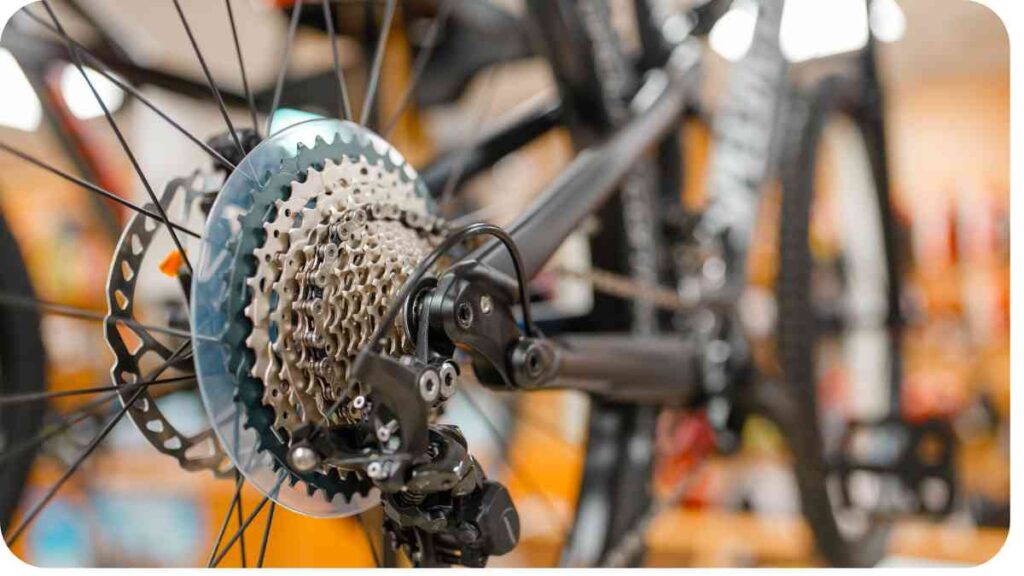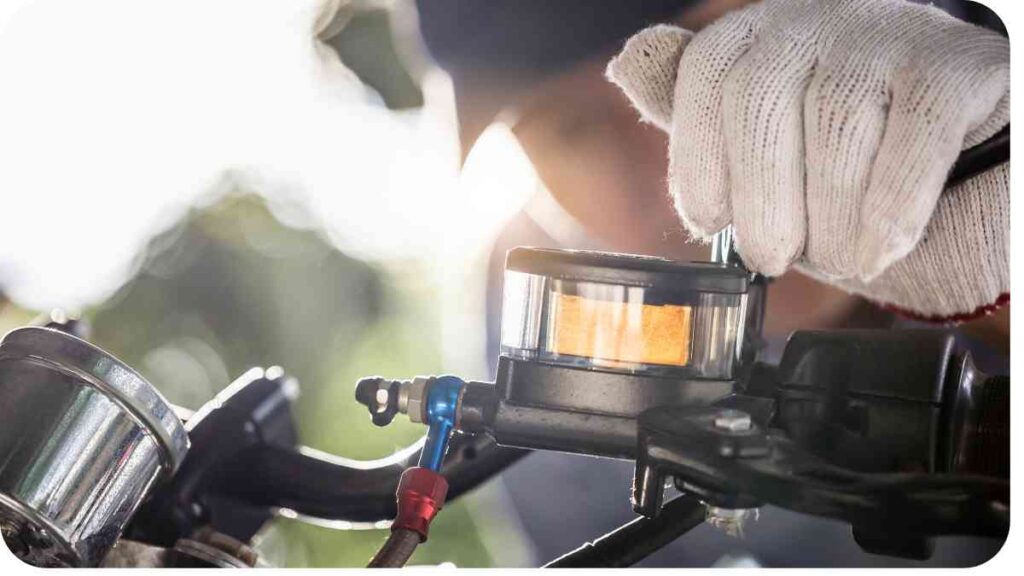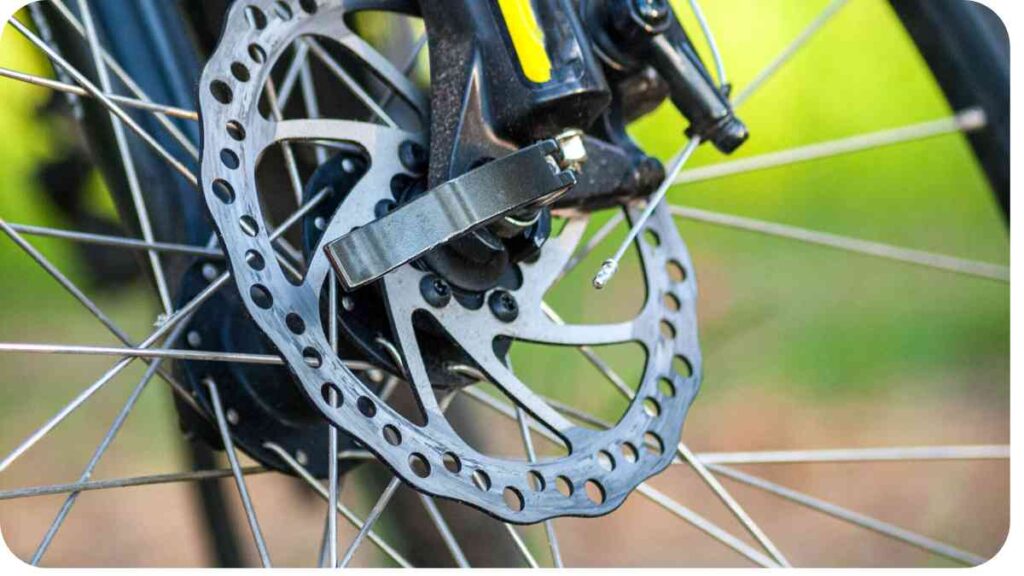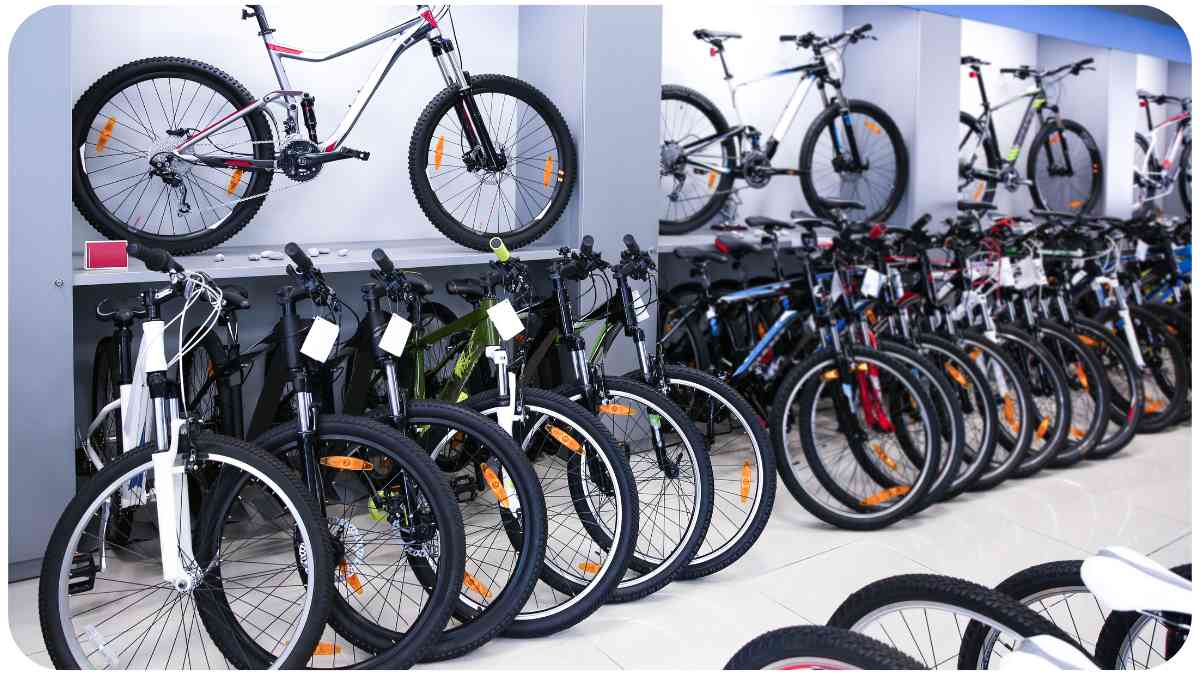As a seasoned cyclist, I understand the frustration that comes with bike gear shifting troubles. Whether you’re a weekend warrior or a daily commuter, a smooth gear transition is crucial for an enjoyable riding experience.
In this comprehensive guide, we’ll delve into the intricacies of bike gear systems, focusing on common issues faced by cyclists using Shimano and SRAM setups. Join me on this journey as we explore practical solutions backed by my personal experiences and industry expertise.
| Takeaways |
|---|
| 1. Regular maintenance is crucial for smooth gear shifting. |
| 2. Understanding your riding style helps in selecting the right gearing components. |
| 3. Proper cable tension is essential for crisp and accurate shifts. |
| 4. Seek professional help if you encounter persistent gear shifting issues. |
| 5. Stay informed through industry insights, credible sources, and user reviews. |
| 6. Upgrading your bike’s gearing requires careful consideration of compatibility and preferences. |
| 7. Real-world experiences and success stories from cyclists offer valuable insights. |
| 8. Explore further reading for in-depth guides and troubleshooting tips. |
| 9. Address common issues promptly, such as chain skipping or delayed shifts. |
| 10. Enjoy the journey of mastering gear shifting for an enhanced cycling experience. |
Understanding Bike Gear Systems

Components of a Gear System
Before we jump into troubleshooting, let’s grasp the fundamental components of a bike gear system. Understanding the interplay between the chain, cassette, derailleur, and shifters lays the groundwork for effective problem-solving. Let’s break down each element and its role in ensuring seamless gear shifts.
Discovering a snag in your game? Fear not! Our guide on tennis racket string issues provides a comprehensive solution, ensuring you’re always match-ready.
| Component | Function |
| Chain | Transfers power from pedals to the cassette |
| Cassette | Houses multiple gears for speed variation |
| Derailleur | Moves the chain across different cassette gears |
| Shifters | Control the movement of the derailleur |
The synergy of these components is essential for optimal gear performance. Now, let’s explore how industry giants Shimano and SRAM contribute to the world of bike gearing.
The Role of Shimano and SRAM in Bike Gearing
Shimano and SRAM stand out as pioneers in the cycling industry, providing a range of components that cater to diverse riding preferences. From entry-level to professional setups, these brands offer cutting-edge technology and precision engineering. As a rider, my experience has been enriched by the advancements brought forth by Shimano and SRAM.
Proper Adjustment Techniques
Maintaining a Shimano gear system involves meticulous adjustments to ensure flawless performance. As an avid cyclist and a bike maintenance enthusiast, I’ve found that proper adjustments can significantly enhance the shifting experience. Here’s a brief guide on getting your Shimano gears finely tuned:
| Issue | Possible Cause | Solution |
| Chain Skipping | Misaligned derailleur or worn-out cassette | Align the derailleur; replace the cassette |
| Delayed Shifts | Cable tension issues or worn-out cables | Adjust cable tension; replace worn-out cables |
| Ghost Shifting | Poorly adjusted limit screws | Fine-tune limit screws for precise shifting |
Maintenance Tips for Shimano Components
Regular maintenance is the key to a long-lasting and trouble-free Shimano gear system. Here are some practical tips to keep your Shimano components in top shape:
- Clean and Lubricate: Regularly clean your chain, cassette, and derailleur. Apply a high-quality lubricant to ensure smooth movement and reduce friction.
- Check Cable Tension: Monitor the tension of your shift cables. If they become loose or frayed, it can lead to sluggish shifting. Replace them if necessary.
- Inspect Derailleur Hanger: A bent derailleur hanger can cause misalignment issues. Use a derailleur hanger alignment tool to straighten it out.
- Evaluate Chain Wear: Keep an eye on chain wear. A stretched or worn-out chain can accelerate the wear on the cassette and chainrings.
Ace your game with our guide on solving common issues with Wilson tennis racket strings. Maximize your playtime with these troubleshooting tips and keep your game strong.
Recognizing Wear and Tear
Being attuned to signs of wear and tear is crucial for proactive maintenance. Here are some indicators that your Shimano gear components might need attention:
- Excessive Noise: Unusual noise during shifting or pedaling can signify worn-out components.
- Inconsistent Shifting: If shifts are not crisp and precise, it may indicate cable issues or a worn-out cassette.
- Chain Skipping: Skipping between gears under load suggests a worn-out cassette or chain.
| Symptom | Possible Cause | Action Required |
| Excessive Noise | Worn-out chain or cassette | Replace the chain or cassette |
| Inconsistent Shifting | Cable issues or worn-out cassette | Check cables; replace if necessary |
| Chain Skipping | Worn-out cassette or chain | Replace the cassette or chain |
Feel free to bookmark this troubleshooting table for quick reference when you encounter gear issues with your Shimano setup.
Shimano Troubleshooting Table
| Symptom | Possible Cause | Action Required |
| Excessive Noise | Worn-out chain or cassette | Replace the chain or cassette |
| Inconsistent Shifting | Cable issues or worn-out cassette | Check cables; replace if necessary |
| Chain Skipping | Worn-out cassette or chain | Replace the cassette or chain |
Now, let’s delve into more specific solutions for common Shimano gear issues:
- Chain Skipping Solution:
- Check for proper chain tension.
- Inspect the chain for any stiff links or tight spots.
- If the issue persists, consider replacing the chain and cassette simultaneously for optimal performance.
- Delayed Shifts Solution:
- Ensure proper cable tension. Use a cable tension gauge for accuracy.
- Lubricate the cables and shifters regularly to minimize friction.
- If problems persist, inspect the derailleur for any debris or obstruction.
- Ghost Shifting Solution:
- Fine-tune the limit screws on the derailleur to prevent overshift or undershift.
- Check for any loose bolts or parts in the derailleur assembly.
- If the issue persists, consult a professional bike mechanic for a comprehensive inspection.
Solutions for SRAM Gear Systems
Now, let’s transition to addressing gear shifting troubles with SRAM setups. Stay tuned for valuable insights and actionable solutions.
Keep your fitness journey on track! Our guide on Polar heart rate monitor connectivity issues offers troubleshooting tips. Achieve accurate results and maintain peak performance effortlessly.
Solutions for SRAM Gear Systems

Adjusting SRAM Derailleurs
As a cycling enthusiast, I’ve encountered my fair share of SRAM gear shifting challenges. SRAM systems, known for their precision and responsiveness, may occasionally face issues that impact the overall riding experience. Let’s explore solutions specific to SRAM gear systems:
1. Chain Skipping on SRAM:
- Inspect Chain Wear: A worn-out chain is a common cause of skipping. Use a chain wear indicator to assess its condition.
- Replace Chain and Cassette: If the chain shows significant wear, replace both the chain and cassette for optimal performance.
2. Delayed Shifts with SRAM:
- Cable Tension Adjustment: Like Shimano, SRAM systems benefit from proper cable tension. Adjust the tension to ensure swift and accurate shifts.
- Lubricate Shifters and Cables: Regularly lubricate shifters and cables to minimize friction. Dry or sticky cables can cause delays in shifting.
Dive into the world of cycling governance! Explore our article on the UCI to understand its role as the heartbeat of professional cycling. Gain insights into the sport’s regulatory body.
3. Ghost Shifting Issues:
- Limit Screw Adjustment: Fine-tune the limit screws on the derailleur to prevent ghost shifting. This is crucial for maintaining precise gear engagement.
- Check for Bent Derailleur Hanger: A bent hanger can cause erratic shifting. Use a derailleur hanger alignment tool to correct any misalignment.
4. SRAM Troubleshooting Table
| Symptom | Possible Cause | Action Required |
| Chain Skipping | Worn-out chain or cassette | Replace the chain or cassette |
| Delayed Shifts | Cable tension issues or sticky cables | Adjust cable tension; lubricate cables |
| Ghost Shifting | Misaligned limit screws or bent hanger | Adjust limit screws; check derailleur hanger |
In my experience, addressing these issues promptly can enhance the performance and longevity of SRAM gear systems. However, it’s important to note that individual riding styles and conditions can influence the frequency of these troubleshooting scenarios.
Maintaining SRAM Shifters
SRAM shifters play a pivotal role in the overall gear-shifting process. Regular maintenance ensures their optimal function. Here are some tips:
- Clean and Lubricate: Remove accumulated dirt and grime from shifters regularly. Apply a light lubricant to pivot points for smooth operation.
- Inspect Cables: Examine shift cables for signs of wear or fraying. Replace them if needed and ensure proper cable tension.
- Verify Shifter Compatibility: Confirm that your SRAM shifters are compatible with the cassette and derailleur. Mismatched components can lead to shifting issues.
Remember, a well-maintained SRAM gear system contributes to a seamless and enjoyable cycling experience. Now, let’s explore the considerations for upgrading your bike gearing.
Step into precision! Our guide on calibrating Fitbit ensures accurate step counts and heart rate readings. Optimize your fitness tracking and stay on the right path.
Upgrading Your Bike Gearing

Evaluating Your Riding Style
Before diving into the world of gear upgrades, it’s crucial to assess your riding style. Different cyclists have varying preferences and requirements when it comes to gearing. Whether you’re a mountain biker, road cyclist, or a commuter, understanding your riding style is the first step towards a well-informed upgrade.
Choosing the Right Components
When it comes to upgrading your bike gearing, selecting the right components is paramount. As a cyclist who has experimented with various setups, here’s a breakdown of key considerations:
- Cassette and Chainring Ratio: Choose a ratio that aligns with your riding terrain. A wider range is beneficial for mountain biking, while a closer ratio may suit road cycling.
- Material and Weight: Consider the material of the components and their weight. Lighter materials can enhance overall bike performance, especially during climbs.
- Technology and Compatibility: Opt for the latest technology that aligns with your chosen brand—be it Shimano or SRAM. Ensure compatibility between shifters, derailleurs, and other components.
Compatibility Considerations
| Component | Shimano Considerations | SRAM Considerations |
| Cassette | Shimano cassettes are designed for optimal Shimano setups | SRAM cassettes are optimized for use with SRAM components |
| Derailleur | Shimano derailleurs are best paired with Shimano shifters | SRAM derailleurs work seamlessly with SRAM shifters |
| Shifters | Shimano shifters are designed for precise Shimano shifts | SRAM shifters provide accurate control for SRAM systems |
Understanding the compatibility between components ensures a smooth integration that maximizes the performance of your upgraded gear system.
Comparison Table: Shimano vs. SRAM
| Aspect | Shimano Gearing Systems | SRAM Gearing Systems |
| Technology | Innovative features, refined over decades | Cutting-edge technology for quick shifts |
| Shifting Precision | Known for precise and smooth shifting | Offers quick and precise shifts |
| Weight | Diverse weight options for varied preferences | Lightweight components for efficiency |
| Customization Options | Wide range of components for customization | Modular design for easy customization |
Expert Tips for Smooth Gear Shifting
Regular Cleaning and Lubrication
Maintaining a clean and lubricated gear system is a fundamental aspect of ensuring smooth shifts. Personally, I make it a habit to clean my chain, cassette, and derailleur regularly. Applying a quality lubricant not only reduces friction but also extends the lifespan of the components.
Proper Cable Tension
Cable tension is often overlooked but plays a crucial role in gear shifting. A well-tensioned cable ensures crisp and accurate shifts. Use a cable tension gauge to make precise adjustments. If you’re uncertain, seeking guidance from a professional bike mechanic can save you from potential issues down the road.
Understanding Your Gearing Needs
Your choice of gearing should align with your riding preferences and the terrain you frequent. Are you a climber who needs lower gears for ascents, or a sprinter requiring a closer ratio for speed on flat terrain? Understanding your unique needs allows you to tailor your gear setup for an optimized riding experience.
Seeking Professional Help
When in doubt or facing persistent issues, don’t hesitate to seek assistance from a professional bike mechanic. They possess the expertise to diagnose and address complex gear shifting issues.
A professional tune-up can make a significant difference in the performance of your bike.
Now, let’s delve into real-world experiences, sharing personal challenges and successes in overcoming gear shifting obstacles.
Real-World Experiences
Overcoming Personal Gear Shifting Challenges
In my cycling journey, I’ve encountered various gear shifting challenges, especially during long rides and adverse weather conditions. One memorable experience involved a persistent chain skipping issue that impacted my uphill performance. After consulting with a local bike shop, the solution was a comprehensive replacement of both the chain and cassette. The difference was remarkable, emphasizing the importance of timely maintenance.
Success Stories from Cyclists
I’ve also had the privilege of connecting with fellow cyclists who’ve shared their success stories in conquering gear shifting troubles. From adjusting derailleur hangers to discovering the perfect cassette ratio, each story reinforces the notion that with the right knowledge and perseverance, any gear-related obstacle can be overcome.
Industry Insights and Credible Sources
When it comes to gear systems, staying informed with industry insights and relying on credible sources is crucial. Recommendations from seasoned bike mechanics, insights from Shimano and SRAM, and user reviews provide valuable perspectives. Let’s explore these insights further.
Industry Insights and Credible Sources
Recommendations from Bike Mechanics
Experienced bike mechanics are a treasure trove of knowledge when it comes to gear systems. They offer practical advice, diagnose issues accurately, and provide tailored solutions. If you’re facing persistent gear shifting troubles, consulting a reputable bike mechanic can be a game-changer.
Insights from Shimano and SRAM
Drawing insights directly from the manufacturers, Shimano and SRAM, is essential for staying updated on the latest advancements and recommended maintenance practices. Both companies regularly release technical guides and updates that can aid in troubleshooting and optimizing your gear system.
User Reviews and Ratings
User reviews and ratings provide a real-world perspective on the performance of different gear systems. Online platforms and cycling communities are valuable resources for gauging the experiences of fellow cyclists. Pay attention to patterns in feedback to identify common issues and effective solutions.
Now that we’ve explored real-world experiences and credible sources, let’s wrap up our comprehensive guide with a conclusion.
Conclusion
In the world of cycling, a smooth gear-shifting experience is the key to an enjoyable ride. By understanding the nuances of Shimano and SRAM gear systems, troubleshooting common issues, and considering upgrades, you empower yourself to overcome challenges and enhance your overall cycling experience.
Remember, regular maintenance, proper adjustment techniques, and staying informed about the latest industry insights are essential for keeping your bike gears in top condition. Whether you’re a seasoned cyclist or a beginner, the journey to mastering gear shifting is an ongoing process.
As you embark on your cycling adventures, may your gears always shift seamlessly, and your rides be filled with joy and satisfaction. Happy cycling!
Further Reading
- How to Adjust Your Rear Derailleur: This comprehensive guide provides step-by-step instructions on adjusting your rear derailleur for optimal shifting performance. Learn essential techniques to troubleshoot common issues and keep your gears running smoothly.
- Tuning Fork: A Troubleshooting Guide to Some Common 1x Drivetrain Shifting Woes: Dive into this troubleshooting guide specifically tailored to 1x drivetrains. Discover practical tips and solutions for addressing shifting problems, ensuring your mountain bike’s drivetrain operates flawlessly on every trail.
- 10 Reasons Why Your Shifting Sucks: Uncover the reasons behind subpar shifting with this insightful article. BikeRadar explores ten common issues that may affect your bike’s shifting performance, offering valuable insights into diagnosing and resolving these problems.
FAQs
How often should I clean and lubricate my bike’s gears?
Regular cleaning and lubrication are essential for optimal gear performance. Aim to clean and lubricate your bike’s gears every 100-200 miles or more frequently if you ride in challenging conditions.
Can I use Shimano shifters with SRAM derailleurs, or vice versa?
While it’s generally recommended to use components from the same brand for optimal compatibility, in some cases, mixing Shimano shifters with SRAM derailleurs or vice versa may work. However, it’s essential to check compatibility charts and consider potential limitations.
What should I do if my bike chain keeps skipping?
Chain skipping can be caused by a worn-out chain or cassette. Consider replacing both the chain and cassette, ensuring they are compatible with your bike’s drivetrain.
How do I adjust cable tension for precise shifting?
To adjust cable tension, use a cable tension gauge to ensure accuracy. If you’re unsure, consulting a professional bike mechanic for guidance can help you make precise adjustments.
Is it normal for my bike gears to make noise during shifting?
While some noise during shifting is normal, excessive or unusual sounds may indicate issues. Check for worn-out components, misalignment, or debris, and address any problems promptly to maintain smooth and quiet gear shifts.

Hellen James is an outdoor enthusiast, writer, and hiker. She loves to explore the world around her by immersing herself in nature and visiting new places.


